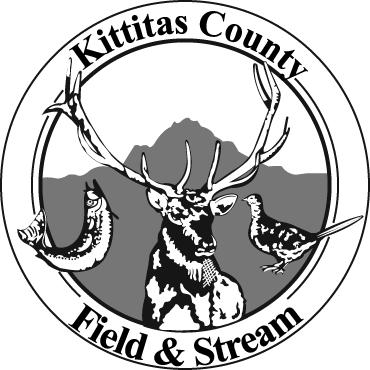Over the years, we’ve had several conversations in this space about the health risks (to wild sheep) of contact between domestic sheep and their wild cousins. While our conversations have focused on local and Northwest problems and die-offs, the issues go far beyond this region and include also domestic goats, as they carry similar pathogens into much of our wild sheep range.
This week’s column is a synopsis of those widespread issues, and recommendations for dealing with them. Find the report from which much of this is drawn, along with maps of wild/domestic sheep overlap and insight into certain conflicts at www.fs.fed.us/biology/wildlife/curl.htm.
The concern over the regular, periodic, epizootics (die-offs) in North American wild sheep populations led 2007 action by the Western Association of Fish and Wildlife Agencies (WAFWA). Its 23 state and provincial member agencies from the U.S. and Canada established a Wild Sheep Working Group (WSWG), charged with developing a report. “Recommendations for Domestic Sheep and Goat Management in Wild Sheep Habitat,” was released in summer of 2007. Once endorsed by the WAFWA Directors, the report and its recommendations for management at all levels was sent to decision-makers in the U.S. Forest Service, Bureau of Land Management, National Park Service, U.S. Fish and Wildlife Service, Bureau of Reclamation, Department of Defense and Canadian equivalents. The report is WAFWA’s official stance on the management of domestic sheep and goats and wild sheep. The latest revision was approved by WAFWA Directors in 2012.
The authors of the report used the most recent and relevant research related to transmission of disease from domestic sheep and goats to bighorns. That became the basis for recommendations with the highest probablility of keeping “effective separation” (spatial or seasonal separation between wild sheep and domestic sheep or goats to minimize the potential for contact and transmission of diseases between species). WAFWA directors recognize that, while it is impossible to reach zero risk, effective separation must be a primary management goal of agencies responsible for the conservation of wild sheep.
This has been a long time coming. It is generally agreed that there were around two million wild sheep in North America in 1800. Today, the Bighorn Institute (Palm Desert, CA) estimates the following populations. Just under 120,000 Dall’s and Stone sheep range in Alaska and Canada. About 34,000 Rocky Mountain bighorns occupy habitat in the western U.S. and Canada. Today, California bighorns – along the west coast – number 10,500, and approximately 23,000 desert bighorns range through the southern portions of North American sheep habitat.
According to numerous historical accounts, the declines coincided with the advent of domestic livestock grazing on ranges occupied by bighorn sheep. No doubt, die-offs among wild sheep occurred without the implication of domestic sheep or goat interactions, but contact among them has led to significantly larger and more widespread losses.
Thus, the following WAFWA recommendations. These are designed to help state and provincial wild sheep pros, federal and crown land management agencies, private landowners and others take positive action to eliminate range overlap, and reduce the chance of pathogen transmission to wild sheep. Not all parties yet even acknowledge the risk of transmission from domestic sheep and goats, but this is a start.
It is recommended that agencies: (1) assess wild sheep conservation value/status and complete risk assessments of interspecies contact; (2) remove wild sheep that have likely associated with domestic sheep or goats, and develop prompt response policies; (3) deeply explore consequences of translocations, with appropriate habitat analysis; (4) coordinate with all stakeholders on management of domestic sheep or goats on or near bighorn ranges; (5) fully consider disease risks when issuing or commenting on permits/regulations associated with private lands; and (6) develop educational materials and outreach programs.
Land management agencies should: (1) eliminate overlap of domestic sheep or goat allotments or grazing within wild sheep habitat; (2) ensure that operating instructions or equivalent include measures to minimize domestic association with wild sheep and confirm appropriate methods to remove strays; and (3) support wild sheep habitat for healthy populations in areas without domestic sheep or goats.
Wild sheep conservation organizations should: (1) assist with educational/extension efforts; (2) negotiate alternatives and incentives for domestic sheep or goat grazers on public land to find alternative grazing; and (3) advocate and support research regarding disease risk of domestic sheep and goats around wild sheep.
Domestic sheep and goat permittees/owners should: (1) use best management practices to prevent straying by their sheep or goats; and (2) establish protocols to respond to straying.
Private landowners should: (1) learn more and work with wild sheep managers/advocates for effective separation with site-specific mitigation measures; and (2) promptly report potential or actual contact between domestic sheep or goats and wild sheep.”
Another week we will look at practical and financial solutions proposed and underway to meet some of the recommendations outlined above. For the moment, wander down the Yakima River Canyon and spend a time keeping good thoughts for the icons of our wild ground.




